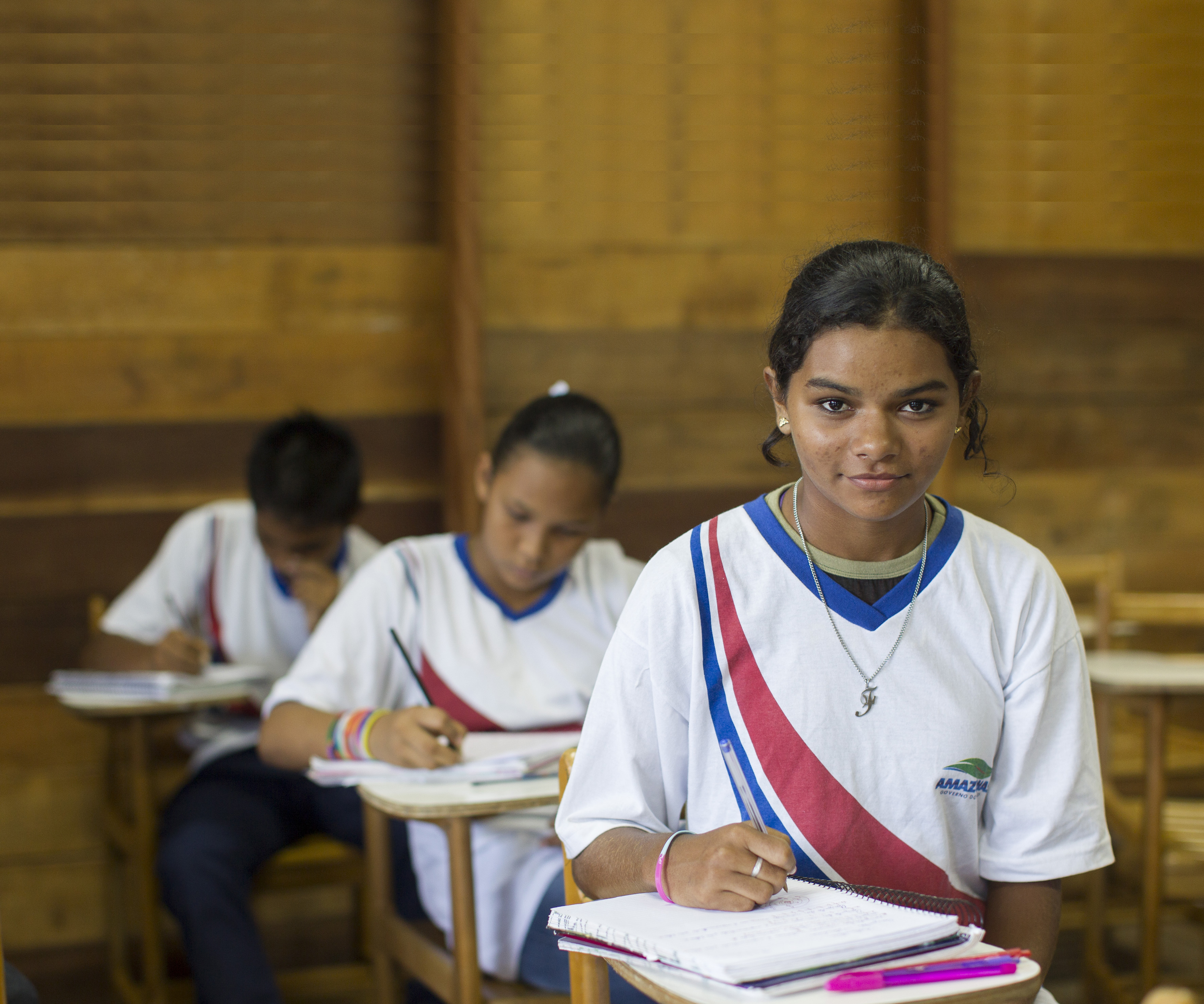Target 4.1 – Primary and secondary education
Key Messages
- In 2015, there were 264 million primary and secondary age children and youth out of school: 61 million children of primary school age (9% of the age group), 62 million adolescents of lower secondary school age (16%), and 141 million youth of upper secondary school age (37%).
- Household survey data from 2010–2015 indicate completion rates were 83% for primary, 69% for lower secondary and 45% for upper secondary education.
- There is no globally agreed standard for measuring reading and mathematics proficiency yet, but substantial efforts have been made since 2016 through the Global Alliance to Monitor Learning.
- Using an interim approach, the UNESCO Institute for Statistics has estimated that 387 million children of primary school age, or 56%, did not reach the minimum proficiency level in reading; in sub-Saharan Africa 87% of children did not reach this level.
- Less than one in five countries guarantee 12 years of free and compulsory education; this guarantee is most common in Latin America and the Caribbean (47% of countries).
- There is a growing tendency to collect test and examination data to monitor schools and assess student learning outcomes.
- Data on student learning outcomes should be adjusted for socio-economic background and follow students over time. But doing this well is hard even for high income countries and extremely challenging for low and middle income countries, where capacity is low and setup costs are high.
The global indicator for target 4.1 is a measure of proficiency in reading and mathematics at an early grade, the end of primary and the end of lower secondary education. There is no global standard for proficiency yet, although steps have recently been taken in that direction through the Global Alliance to Monitor Learning coordinated by the UNESCO Institute for Statistics.
Roughly half of all countries administer a national learning assessment in reading and mathematics at the end of primary and end of lower secondary education. Yet, as of 2017, only between 25% and 38% of countries that participated in regional or international learning assessments have contributed data towards the global indicator. Moreover, results are reported in terms of the proficiency levels defined by each survey, which are not comparable. Countries of the E9 group, a forum of low and middle income countries that have committed to achieving SDG 4 and account for over half the world’s population, hold the key to global reporting on learning outcomes.
Among them, Brazil, Egypt, Indonesia and Mexico contribute data at some of the three education levels, while Bangladesh, China, India, Nigeria and Pakistan do not report on this indicator at any level. It is critical, therefore, for all nine either to participate in a cross-national survey or to use their national assessments for reporting, provided they meet quality standards.
These challenges notwithstanding, data from cross-national learning assessments suggest that, in many countries, particularly low and middle income ones, many students do not reach the minimum proficiency levels. In mathematics, one-third or less of students met the minimum benchmark at the end of primary education in Chad, Kuwait and Nicaragua and at the end of lower secondary education in Algeria, Indonesia and the former Yugoslav Republic of Macedonia. In reading, less than half of students met the minimum benchmark at the end of primary in Cameroon, Congo and Togo and at the end of lower secondary in Albania, Georgia and Lebanon.
These benchmarks measure achievement among those who had reached the respective grade. Assuming those who dropped out or never enrolled do not meet the benchmarks, the real percentage of those who reached the minimum proficiency level needs to be adjusted downwards. In 2015, 264 million children and youth of primary and secondary school age were out of school. After a decline in the early 2000s, out-of-school rates have stagnated – since 2008 for primary education, 2012 for lower secondary and 2013 for upper secondary.
Being in school does not guarantee graduation. According to household survey data for 2010–2015, the global completion rate was 83% for primary education, 69% for lower secondary and 45% for upper secondary. Based on data from 128 countries over the period 2010–2015, which represent 90% of the global population of secondary school age, less than one in four young people had completed secondary school in 40 countries and less than one in two in 60 countries. There were only 14 countries with a completion rate of at least 90% (Figure 8).
Ensuring that education is free and compulsory is one way to prevent school dropout. About 70% of countries, but only 40% of those in sub-Saharan Africa, have at least nine years of compulsory education. Globally, less than one in five countries guarantees 12 years of both free and compulsory education. Such guarantees are most common in Latin America and the Caribbean (47% of countries) and in Caucasus and Central Asia (38% of countries), while no low income country makes that provision.
See previous year’s report on Target 4.1


